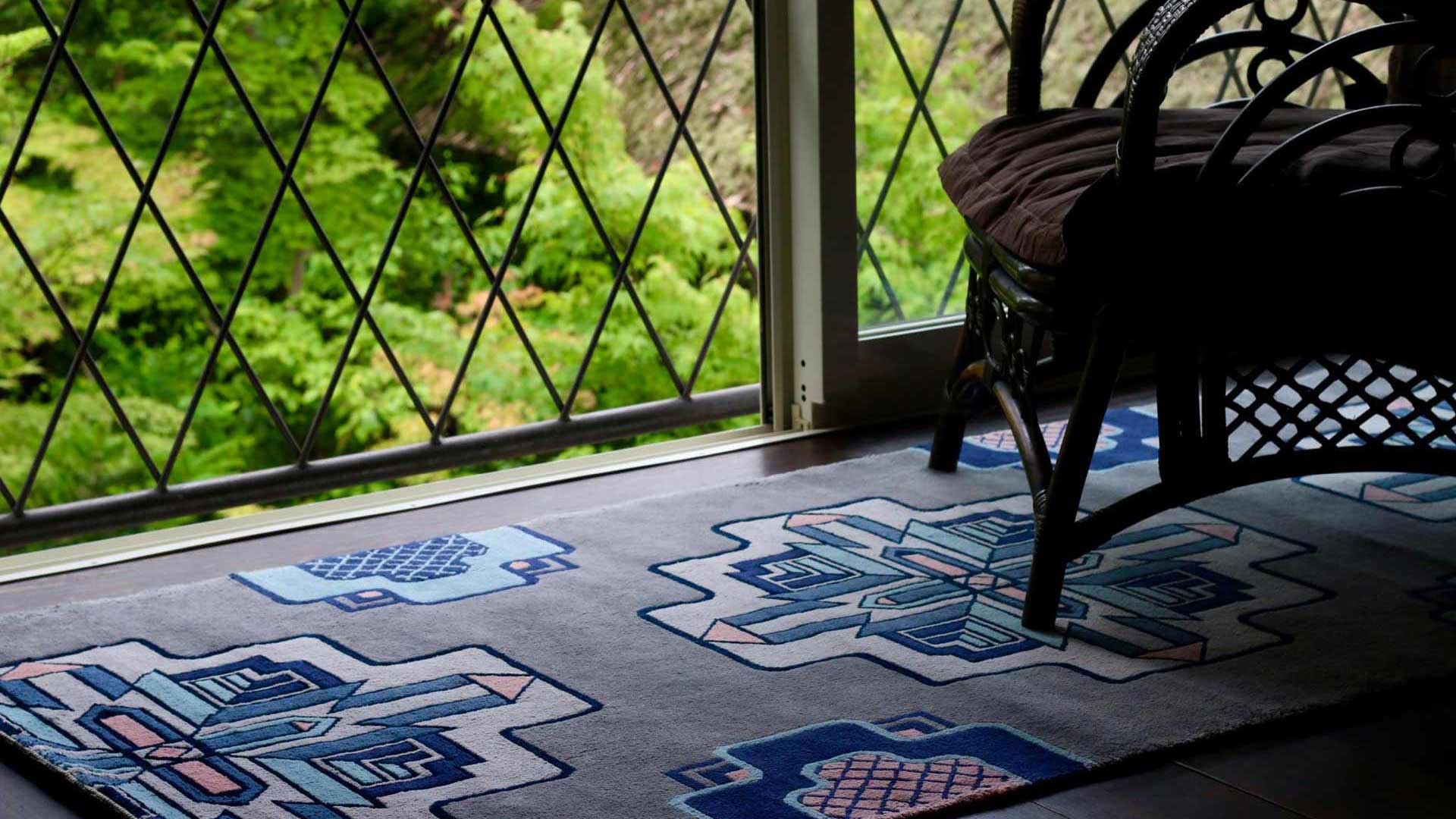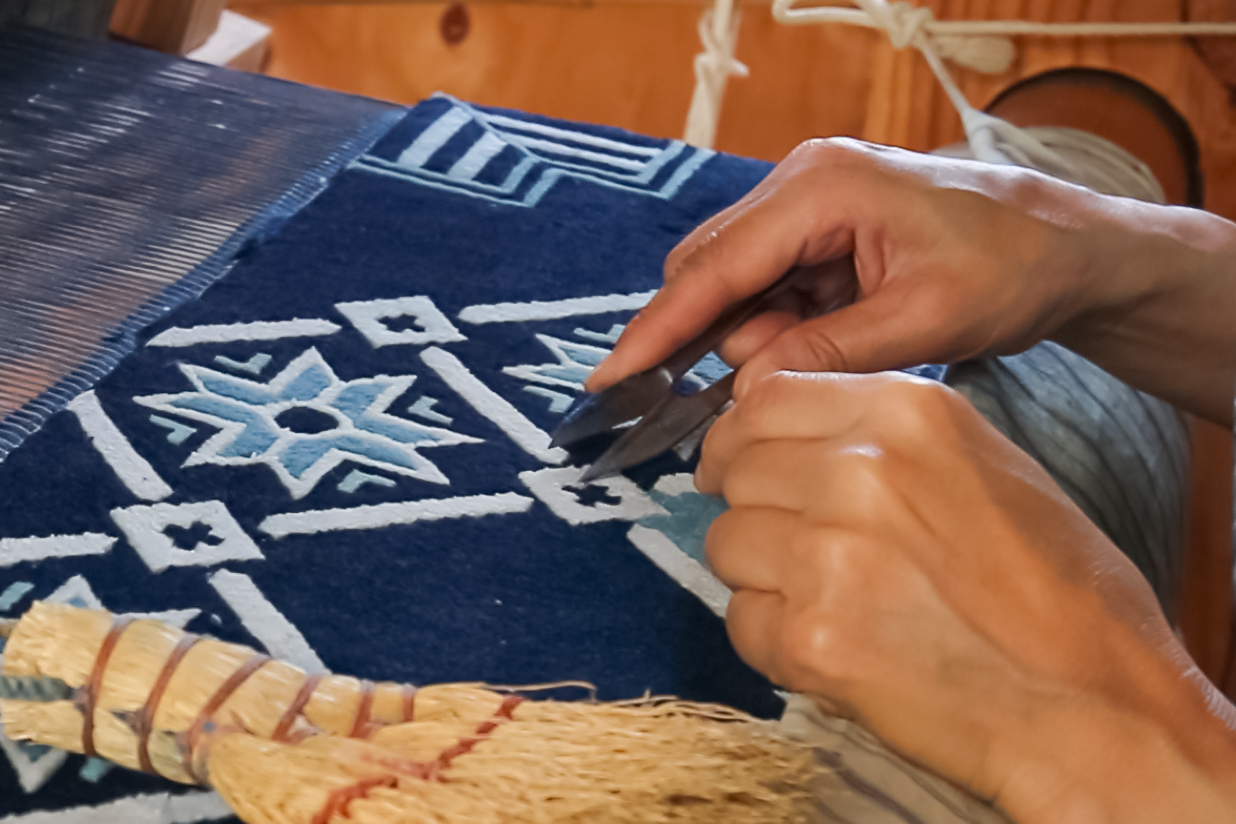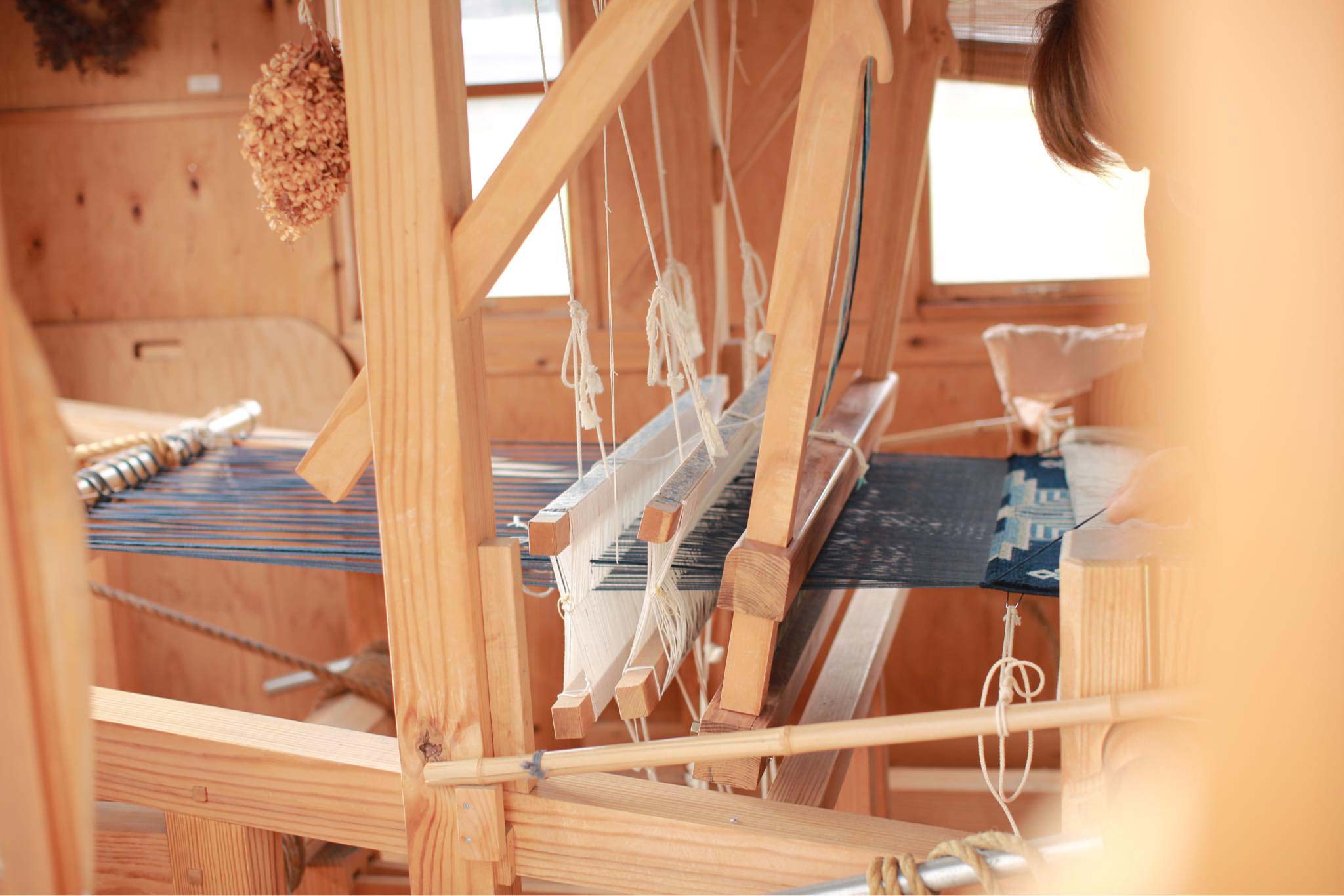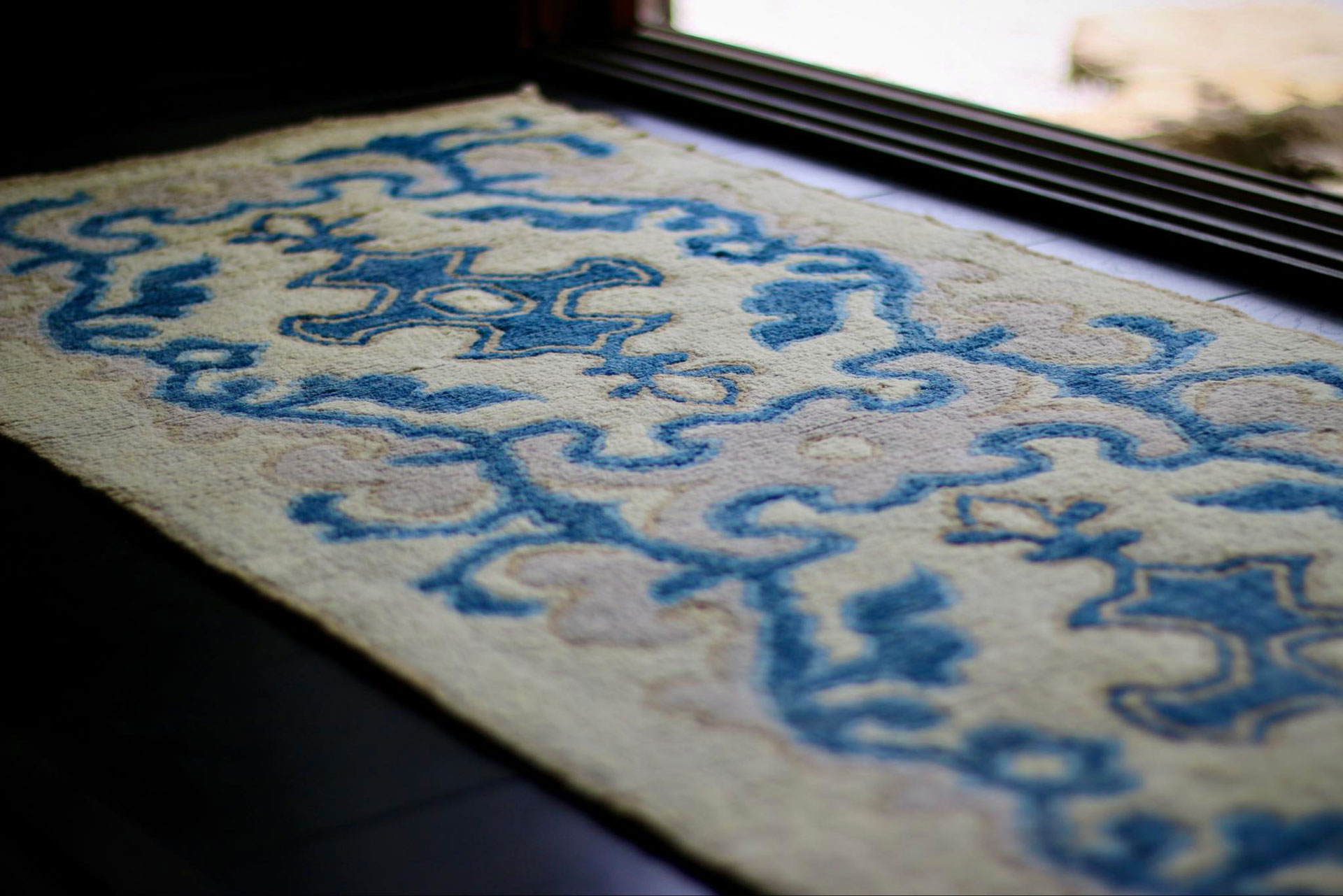
赤穂緞通とは
赤穂緞通の歴史は約150年、多くの国の文化が掛け合わさった美しい文様は、長い時間と場所を旅してきた歴史文化を感じさせてくれます。赤穂緞通は、日本三大緞通の一つであり、その中でも最も繊細で丈夫であることから、京都の祇園祭では、屏風を飾る際の敷物として今でも愛されています。
With a history of 150 years, the carpets beautiful patterns that originate from various exotic cultures inspire us with the past and art that traveled through countless seasons and places.
Being considered as most delicate and durable among the three major dantsu crafts in Japan

赤穂緞通の大きな特徴は、文様の美しさを際立たせるために、握りバサミで糸の毛足を短く切り取る 「摘み」という作業を行うことです。
Ako Dantsu has long been loved as the decorative art rugs for folding screens in Kyoto Gion festival.
成り立ち
赤穂緞通は、赤穂郡中村(現赤穂市中広)に生まれた「児島なか」によって、江戸末期に考案されました。児島なかは讃岐国の高松を訪れた際に出会った中国の万暦氈に魅せられ、以後独自で緞通の技術・研究を重ね、26年もの歳月をかけて明治7年(1874)に赤穂緞通の流通に成功しました。
With a history of 150 years, the carpets beautiful patterns that originate from various exotic cultures inspire us with the past and art that traveled through countless seasons and places.
Being considered as most delicate and durable among the three major dantsu crafts in Japan

明治末期には御料列車の敷物など皇室用品として赤穂緞通が採用され、その風雅な文様は、茶人、料亭、お茶屋などに好まれました。大正から昭和初期にかけては海外にも販路を広げ、全盛期を迎えました。
At the end of the Meiji era, Ako Dantsu was adopted for Imperial use, such as in the Imperial trains, and its elegant patterns were favored by tea masters, traditional restaurants, and tea houses. From the Taisho to the early Showa periods, it expanded its market overseas, reaching its peak.

昭和以降、綿花輸入制限や手作業でしか作れない制約から、近代化に取り残された赤穂緞通は衰退の一途を辿っていましたが、平成に入り、途絶えかけていた技法の伝承と織り子の育成を目的に幾つかの団体が立ち上がり、地場の貴重な伝統工芸品として復興が進んでいます。
Since the Showa era, Ako Dantsu had been in decline, left behind by modernization due to restrictions on cotton imports and the limitations of being crafted solely by hand. However, entering the Heisei era, several organizations were established with the aim of preserving the nearly lost techniques and training weavers. Efforts to revive Ako Dantsu as a valuable local traditional craft have been progressing.

中国やペルシア、インドなどのデザインソースをもとに日本独自デザインを加えた赤穂緞通には様々なデザインバリエーションが存在します。バランスの取れた風雅な文様、赤穂緞通の世界をぜひお楽しみください。
Ako Dantsu features a variety of design variations, incorporating original Japanese designs inspired by sources from China, Persia, India, and more. Please enjoy the world of Ako Dantsu, with its well-balanced and elegant patterns.